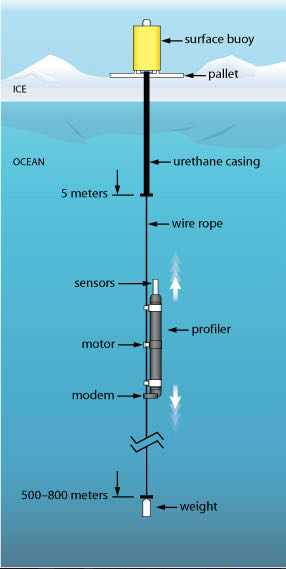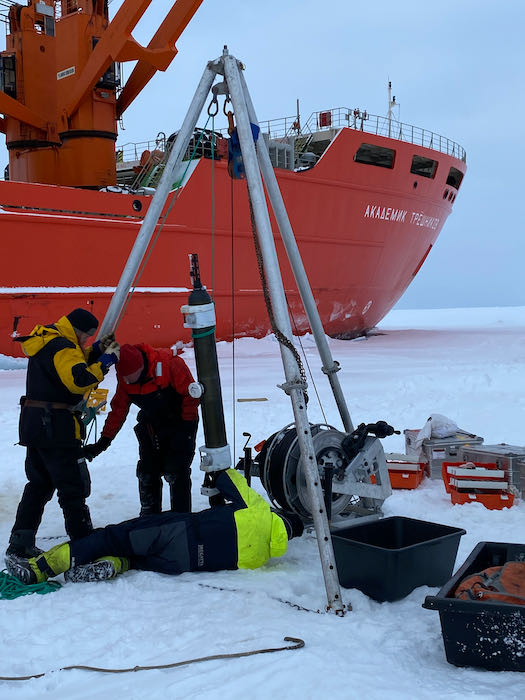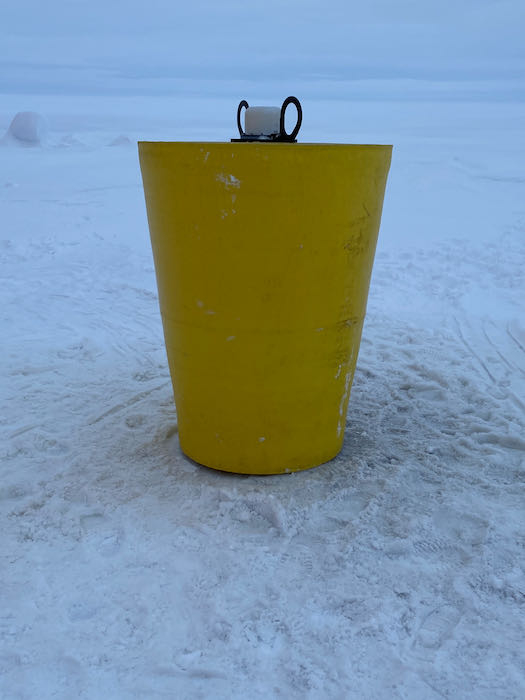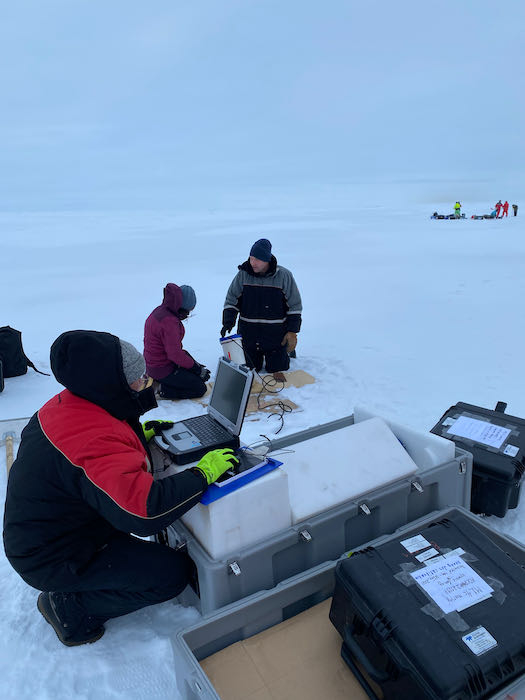Now that I've got the tune of that ridiculous song in your head (for those "youngsters" in the audience that don't know the 1990 reference, look up Vanilla Ice - "Ice, Ice, Baby" on YouTube), I'd like to explain what an ice station actually entails.
After using the lift basket and crane to get people and equipment down onto the ice (see the 10/6 journal for details), the scientists began doing a variety of different experiments. One of the first tasks for all the groups is to drill holes in the ice.

The largest project involved setting up and deploying an ITP (Ice Tethered Profiler) by the team from UAF (University of Alaska Fairbanks), WHOI (Woods Hole Oceanographic Institution), and AARI (Arctic and Antarctic Research Institute - Russia) - I know, it's acronym hell. The system consists of a large cylindrical apparatus that measures temperature, depth, conductivity (salinity), currents, and other characteristics of the water beneath the ice. This profiler will move up and down anywhere from 500-800 meters along a wire, collecting data and transmitting it to satellites.

A large float/surface buoy (yellow) was attached to the wire. The float sits on top of the ice and will also support the ITP if the ice melts. The entire system will travel with the ice pack, allowing scientists to track the movement through the Arctic Ocean.


In the meantime, UAF and IARC (International Arctic Research Center) scientists had to calibrate one of the instruments that was going to be placed on a future mooring. When we were in Kirkenes, researchers were working on an ADCP (Acoustic Doppler Current Profiler), an instrument that will be attached to a mooring cable and monitor the vertical and horizontal components of the ocean currents once per hour for 2-3 years. In order to run that long, a battery pack is installed. Because that battery pack has a magnetic field, the compass in the ADCP has to be calibrated. This can't be done on the ship, so the researchers have to take it out on the ice at least 30-50 meters away from any metal, place it on a turntable, attach it to a laptop, and calibrate the directional system - who knew?!?

All of these activities are done while standing/sitting on the ice, dealing with the windchill, snow, fog, and polar bears. This is like the X-Games of science.
P.S. On the 3rd ice station, bear watchers spotted a polar bear more than 1/2 mile away, so the team used the basket lift and the supply crane to be quickly lifted off the ice. The bear never really approached, but better safe, than lunch.


Comments